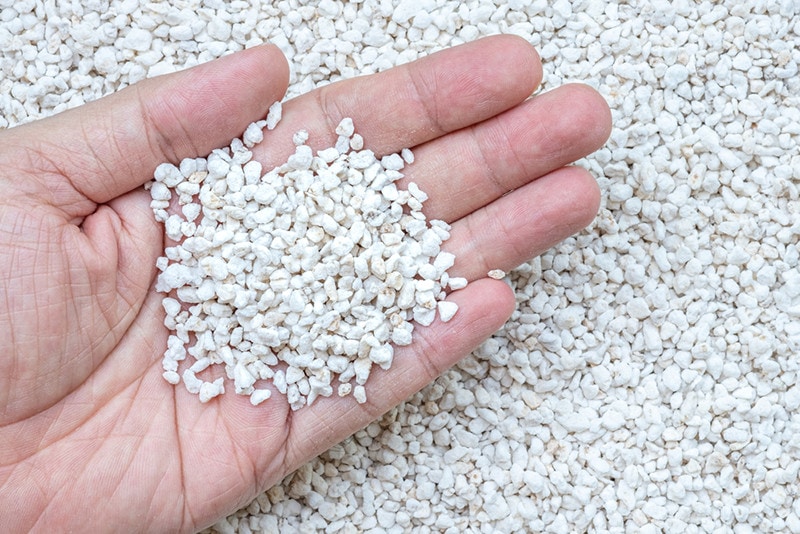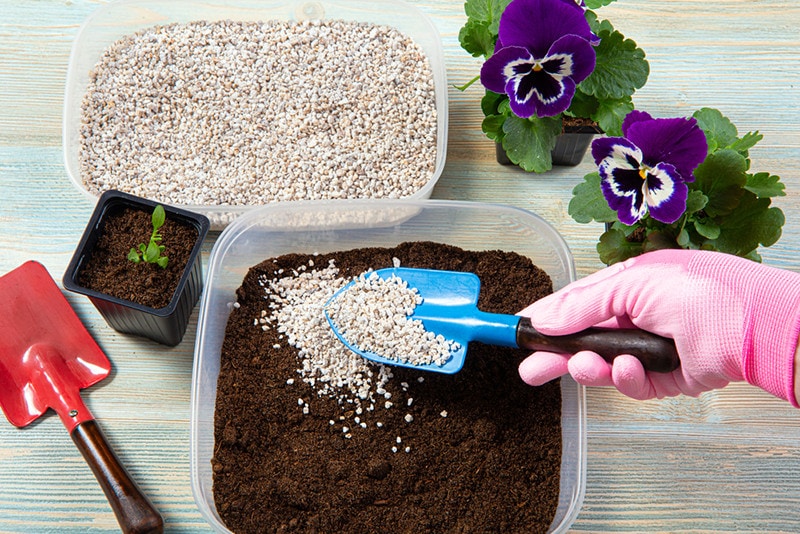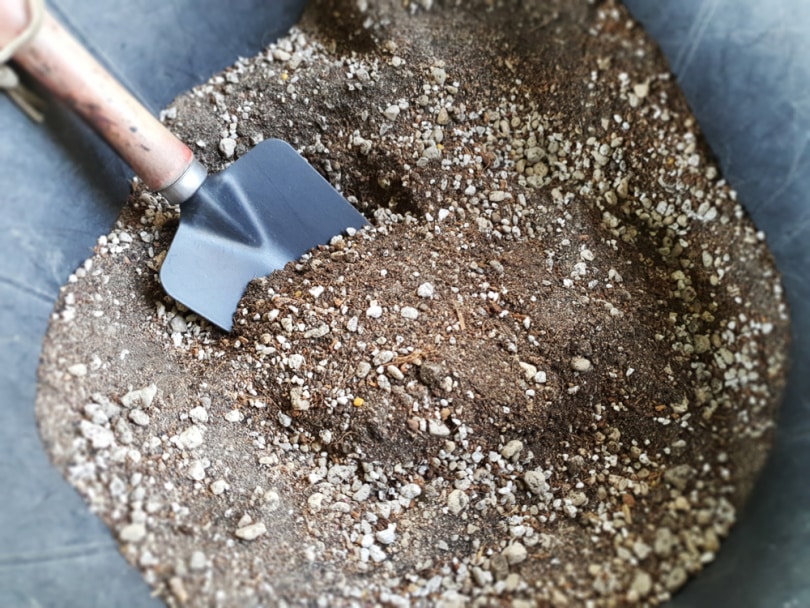Should You Add Perlite to Your Soil? Different Types, Pros & Cons
-
Jana Blagojevic
- Last updated:

Perlite is an amorphous volcanic glass that occurs as a natural material. It comes in the shape of globules and resembles lightweight materials such as styrofoam. Perlite is a porous material with high water levels, and it has cavities that help it store nutrients and moisture. Some of the great qualities this material carries are that it’s disease-free and non-toxic, making it an excellent addition to gardening. Because of its moisture-retaining properties, perlite has many benefits for plants and the soil and is incredibly easy to work with.
Click to Jump Ahead:
How Perlite is Formed
Perlite is formed when obsidian, a naturally occurring volcanic glass, comes in contact with water. This material has the highest amount of water of any glass variety. Every material with a volcanic origin has colors ranging from gray to black, while you may have noticed that the perlite used in the garden has soft white colors.
To create a lightweight material that many gardeners use, regular perlite has to be heated up to 1,650 °F, which causes the trapped water to evaporate. The material then softens significantly and gains water retaining properties because of the newly formed holes and cavities.

The 4 Types of Perlite
After regular perlite is heated and expanded, it is commonly referred to as horticultural perlite. Depending on the particles’ size, perlite used in the garden has four types.
1. Super Coarse Perlite
| Grade: | 4 |
| Size: | 1 inch |
This perlite is used in garden beds for extremely heavy and dense soil. It is mainly used in soils with a high capacity for retaining water, such as clay soil, and it is not as popular in gardening as other types.
2. Coarse Perlite
| Grade: | 3 |
| Size: | ½ inch |
Coarse perlite is a perfect mixture of excellent draining and water-retaining material. This type of perlite is mainly used for garden succulents and orchids.
3. Medium Grade Perlite
| Grade: | 2 |
| Size: | ¼ to ⅜ inch |
Medium-grade perlite is frequently used as a growing medium for seedlings and is excellent at amending potted plants. It can also be mixed into different components and used as a potting mix.
4. Fine Grade Perlite
| Grade: | 1 |
| Size: | ⅛ inch |
Fine-grade perlite is best used for starting seeds and for rooting cuttings.
Benefits of Adding Perlite to the Soil
While it is not a requirement, there are many excellent reasons why adding perlite to your soil benefits your garden. Since the structure of perlite is so unique, it promotes excellent soil aeration and increases water drainage where needed. The many cavities of perlite are responsible for retaining moisture and nutrients.
Since this natural material cannot decompose, it can be reused in the garden constantly and makes a great addition to organic gardens. Perlite is excellent for potting mixes, as a growing medium for seedlings, for specific plants such as succulents, and can also be a perfect medium in hydroponic gardening.

Risks of Using Perlite for the Soil
While perlite is quite a beneficial material for many plants and soil types, there are some occasions where perlite is not a good choice. To understand when and if it’s okay to use perlite for your soil, consider these benefits and the risks.
- Perlite can irritate some gardeners because of the tiny dust particles
- It can be harmful to moisture-loving plants
- Perlite tends to rise to the top level of the soil, leaving the bottom layers denser and more susceptible to rot root
- It is only suitable for outdoor plants and soil and unsuitable for indoor pot mixes
- It is a non-renewable natural resource
How Much Perlite to Use for the Soil
Depending on the soil type and the purpose, the ideal perlite/soil ratio should be 1:4. Another way to use perlite in the soil is to add between 10 and 20% of perlite. This ratio creates a balanced environment where the soil drainage will be ideal while the perlite will retain enough moisture. Adding too much perlite to the soil can cause your plants to wilt, so remember to use the recommended amount.

Conclusion
After reading about how perlite can amend your soil and add beneficial properties, you will hopefully understand the importance of correctly using the natural material. Before applying perlite to your soil, it is essential to know the recommended amount and which plants will enjoy it. Certain plants thrive in moisture, and perlite is the perfect addition to keep them healthy.
Featured Image Credit: Gabriel Phphy, Shutterstock
Contents
